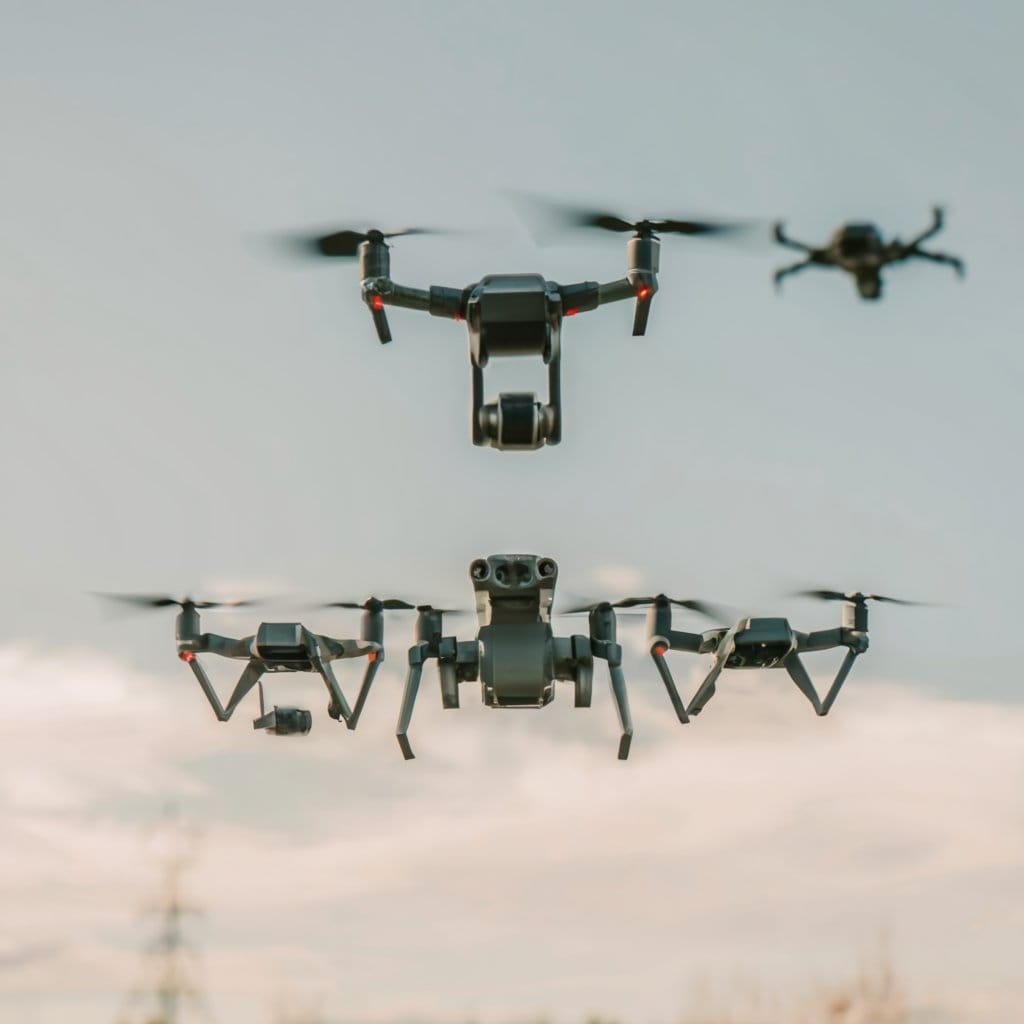Electric Vertical Takeoff and Landing (eVTOL) aircraft are a new aircraft type that uses electric propulsion systems to take off and land vertically. These aircraft can potentially revolutionize urban mobility by reducing congestion and providing a sustainable transportation option. The eVTOL concept is significant because it can redefine how we think about air travel and its role in modern transportation.
Historical Journey of eVTOL Aircraft
The eVTOL concept was born in 2009 when many innovative ideas and prototypes emerged. This development eventually led to the development of eVTOL aircraft. Aviation pioneers worked on vertical flight methods during this time, which caused a significant shift in the aviation industry. NASA, the National Aeronautics and Space Administration, played a crucial role in shaping the eVTOL landscape through their research and contributions, which have had a lasting impact on the design and technology of these aircraft.
Milestones in eVTOL Evolution
The evolution of eVTOL aircraft has reached significant milestones, from the conceptual stage to technological advancements spanning decades. The eVTOL journey began with early prototypes and conceptualizations, exploring various VTOL capability designs. These initial models laid the groundwork for subsequent advancements. Over the decades, eVTOL technology has experienced remarkable progress. Technological advancements in battery systems, materials, and aerodynamics have propelled eVTOLs into a new era of efficiency and feasibility.

eVTOL Technology Development
eVTOL technology uses electric motors to lift and manoeuvre aircraft vertically. It aims to provide sustainable air transportation, reduce traffic congestion, and curb pollution. Many companies invest in research and development to create safe and functional eVTOL aircraft.
Electric Propulsion Systems
Electric propulsion systems are the main components of eVTOL technology, which uses advanced electrical engineering to enable vertical flight. These systems are crucial in achieving the efficiency and sustainability targets of eVTOL aircraft. Innovations in battery technology, motor efficiency, and power management are essential for developing strong electric propulsion systems.
Vertical Takeoff and Landing Mechanisms
The core of eVTOL technology is achieved through complex mechanisms and revolves around its capacity to take off vertically and land. These include large omnidirectional fans that allow the aircraft to move in any direction and perform vertical takeoff. Controlled descent mechanisms are employed for vertical landing to ensure a safe and accurate return to the ground.
Noteworthy eVTOL Aircraft Models
The eVTOL industry offers various aircraft models to meet specific urban mobility ecosystem requirements. Prominent examples of such models include the Vertical Aerospace VA-1X, Joby Aviation’s Joby S4, and Lilium’s Lilium Jet. These aircraft showcase the versatility of eVTOL technology in catering to different passenger capacities, ranges, and operational scenarios.
Innovative Features and Design Elements
Innovation is a crucial aspect of eVTOL design, incorporating features beyond traditional aircraft concepts. Some of the ground-breaking design elements include distributed electric propulsion, advanced materials for weight reduction, and autonomous flight capabilities. These features enhance the performance of eVTOLs and contribute to the futuristic and sustainable vision of urban air mobility.
Future Outlook of eVTOL
Integration with Urban Transportation
The seamless integration of eVTOL aircraft into urban transportation networks is crucial for their future. With the rapid advancement of technology, eVTOLs are on the verge of becoming essential to urban mobility, providing swift and efficient aerial transportation within cities. The current trend is to establish vertiports and infrastructure that connect eVTOL services with other urban transport modes, allowing for a seamless and integrated transportation system.
Potential Impact on Traffic and Commuting
The impact of eVTOL aircraft on urban traffic and commuting could be revolutionary. By flying above ground-level traffic, eVTOLs have the potential to revolutionize commuting. The benefits of this technological advancement include shorter commute times, less traffic congestion, and improved mobility options. The prospect of avoiding traditional road congestion promises a more efficient and stress-free urban commuting experience.
Electric Propulsion and Reduced Emissions
The future of the eVTOL industry is closely tied to its sustainability. The electric propulsion systems used in eVTOL technology emit fewer pollutants than traditional aviation engines. By transitioning to electric power, the eVTOL industry addresses environmental concerns and supports global efforts to combat climate change. This emerging trend highlights the significant role of eVTOLs in driving the aviation industry toward a greener and more sustainable future.
eVTOL’s Role in Green Aviation Initiatives
eVTOLs are increasingly gaining prominence as an essential component of eco-friendly aviation initiatives. As the aviation industry strives to reduce its carbon footprint, eVTOLs have emerged as a viable solution due to their ability to operate quietly, emit fewer pollutants, and use electric power sources. This aligns with the overarching objective of creating a more sustainable aviation landscape. Integrating eVTOLs into urban air mobility has significant potential to contribute to the vision of a green and responsible aviation sector.
Market Growth and Analysis
Major Players in the eVTOL Industry
The eVTOL industry is shaped dynamically by significant players contributing to its growth and innovation. Leading companies in urban air mobility include Joby Aviation, Lilium, Archer Aviation, Beta Technologies, and Vertical Aerospace. These companies are bringing unique technological advancements and strategic approaches to the forefront.
Global Investments and Funding Trends
The eVTOL industry is experiencing significant investments, indicating strong market confidence. Both private and public organizations are investing billions of dollars to develop and deploy these aircraft, demonstrating the industry’s potential for transformative impacts. This financial support comes from venture capital firms as well as governmental bodies.
Anticipated Adoption Rates
The use of eVTOL aircraft will significantly shift the future of aviation. According to projections, the eVTOL market will experience a robust compound annual growth rate (CAGR) in the coming years as the technology matures and gains wider acceptance. eVTOLs are expected to revolutionize air travel by reducing commute times and relieving urban congestion. Additionally, advancements in safety standards are expected to play a crucial role in accelerating the adoption of eVTOLs.
Factors Influencing Market Expansion
Several factors contribute to the growth of the eVTOL market. Technological advancements, support from regulatory bodies, and increasing public acceptance are critical factors. Despite facing challenges such as infrastructure development and regulatory frameworks, the market is set to experience significant growth. Furthermore, the continued development of battery technology and improvements in aircraft design will play a crucial role in expanding the market’s reach.
Challenges and Innovations
Battery Technology and Range Limitations
The emerging technology of eVTOL aircraft poses significant challenges regarding battery technology and range limitations. The existing batteries need help providing substantial energy and fast charging capabilities for eVTOLs. The critical requirement of advancing battery technology is to overcome these challenges and enable rapid charging and longer flight ranges, which are vital for the practicality and efficiency of eVTOLs in various applications.
Noise Reduction and Community Acceptance
It is essential to address any noise concerns to ensure the community accepts eVTOLs. Effective noise reduction technologies are crucial to minimizing the impact of eVTOL operations on the surrounding areas. Finding the right balance between operational efficiency and noise reduction is essential in creating a positive public perception and enabling the smooth integration of eVTOLs into urban environments.
Advanced Materials and Lightweight Structures
The development of advanced materials and lightweight structures is at the forefront of ongoing innovations in the design of eVTOL aircraft. These innovations aim to improve efficiency and performance while ensuring structural integrity. The use of lightweight materials increases payload capacity and significantly contributes to the improved energy efficiency of eVTOL technology, which is a crucial factor in its evolution.
Artificial Intelligence Integration
The use of AI in eVTOL design is a revolutionary advancement. AI technology significantly optimizes flight systems, navigation, and safety, enhancing the overall capabilities and autonomy of eVTOL aircraft. With the integration of AI, eVTOL aircraft can achieve intelligent route planning, real-time decision-making, and other advanced capabilities that push the boundaries of technological innovation.
Global eVTOL Projects
Regional Variations in Development
The development of eVTOL initiatives varies significantly across different regions of the world. Israel has made significant progress in this field by conducting test flights of autonomous eVTOL aircraft, a major accomplishment for the Middle East. Similarly, through collaborative agreements, Saudi Arabia contributes to the growth of the local ecosystem for electric flights in the region. In Europe, there are active collaborations, such as Eve and NATS, which are exploring the development of innovative traffic management products and solutions for urban air mobility on a global scale. These initiatives highlight the international scope of eVTOL advancements and the increasing interest in this technology worldwide.
Collaborative International Projects
The eVTOL technology has gained global attention, as evidenced by collaborative international projects. The Vertical Flight Society’s annual eVTOL Symposium, considered a top-tier technical conference, brings together participants worldwide, showcasing the international community’s collective efforts in advancing eVTOL technology. Moreover, the aerospace industry is witnessing a technological revolution, with numerous eVTOL projects being developed within existing aviation companies and start-ups globally, emphasizing the collaborative and widespread nature of eVTOL innovation.
Economic Impacts of eVTOL
Employment Opportunities in the eVTOL Sector
The emerging eVTOL industry will create many employment opportunities across various domains. With investments worth billions of dollars, the sector is driving advancements in vertiports and eVTOLs, which could transform urban landscapes and propel advancements in aviation technology and services. Establishing a twenty-vertiport network could generate over 2,000 jobs and substantial economic output, highlighting the positive economic impact of the eVTOL industry. Canadians largely support this industry, with nearly 73% of the population backing its development, recognizing its potential for job creation and economic growth.
Economic Contribution to Aviation Industry
The market for eVTOL aircraft is rapidly expanding, with higher growth rates than in previous years. In 2020, the global market grew by 11.94%, exceeding the average year-on-year growth between 2017 and 2019. Economic factors such as interest and employment rates influence the eVTOL industry, creating unprecedented opportunities for future growth and development. Overall, the eVTOL sector is poised to significantly contribute to the aviation industry’s job creation and economic growth.
Lessons Learned and Best Practices
Operational success in advanced air mobility requires collaboration and an open forum for seasoned operators. The piece underscores the importance of collaborative efforts to integrate new advanced air mobility technologies into operational reality safely. The article encourages sharing lessons learned and best practices among operators to enhance the safety and efficiency of eVTOL operations.
Final Thoughts
The eVTOL industry has achieved remarkable progress and reached significant milestones over the past decade. The industry has transformed from a mere dream to a multi-billion-dollar enterprise. This progress includes the development of ground-breaking eVTOL aircraft, which have employed thousands of engineers and technologists. Moreover, Joby Aviation’s innovative eVTOL aircraft has marked a ground-breaking milestone in the industry’s progress.
As we move forward, the eVTOL industry is expected to witness continuous growth and innovation. The upcoming 12 months hold great significance for eVTOL developers and infrastructure companies, as the future of air mobility is anticipated to witness major developments and significant milestones. With advancements in battery technology, certification, regulation, and landing infrastructure, the progress in this field is expected to continue.



